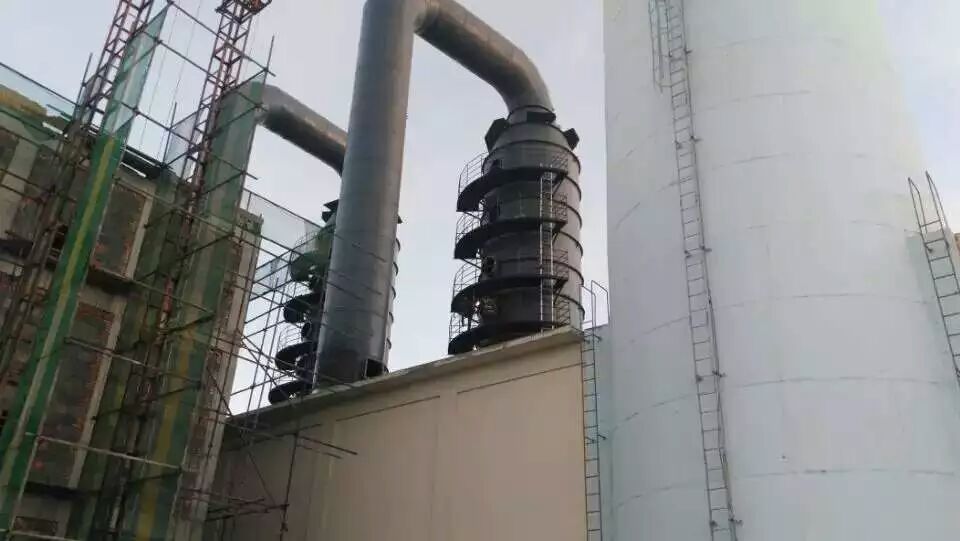


Desulfurization is a technology for controlling sulfur dioxide emissions. Dust collectors can not only remove sulfur dioxide from flue gas, but also produce ammonium sulfate fertilizer products. The dust removal equipment of the boiler uses ammonia water with a concentration (taking 28% as an example) as a desulfurizer to generate ammonium sulfate slurry, which is transported to the treatment system of the fertilizer plant. The required amount of ammonia water used in the desulfurization process is automatically adjusted by a preset pH control valve and measured by a flow meter. Ammonium sulfate crystals are crystallized from saturated ammonium sulfate slurry in the desulfurization and dust collector, generating suspended particles with a weight ratio of about 35%. These slurries are pumped to the processing plant by sub pumps, undergo primary and secondary dehydration, and then sent to the fertilizer plant for further dehydration, drying, condensation, and storage. While flue gas desulfurization is carried out through boiler dust removal equipment, considerable by-products are also generated by the boiler dust collector, achieving economic benefits.
The characteristics of the desulfurization tower produced by Hebei Feixiang Environmental Protection Equipment Co., Ltd. are:
1. Washing type working principle, dust removal and desulfurization, capturing more gas.
The BYJ flue gas purifier integrates desulfurization and dust removal, using a spray method and nozzle design. It adopts a fiberglass spiral nozzle made with American technology, which sprays dense layers of water mist under the water supply pressure. The dust and gas are fully in contact with the water mist, resulting in significantly improved dust removal, desulfurization, nitrogen removal, and carbon black washing effects compared to other wet dust collectors. Dust removal rate ≥, sulfur dioxide removal rate ≥ 85%, flue gas Ringman blackness<; Level 1.
2. Dehydration board, with good dehydration effect. The cylinder is equipped with a dehydration device and a dehydration plate. When the mist passes through the dehydration device, it is collided and diverted, flowing down along the cylinder wall to prevent secondary water carryover and dehydration.
3. Low resistance, water-saving, energy-saving, and low operating costs.
The smoke is naturally introduced from the lower part of the cylinder, with a large cross-section and low wind speed, resulting in low smoke resistance. The main resistance is ≤ 900Pa, and the system resistance is ≤ 1200Pa. Due to low resistance, the power consumption is also low. In addition, the discharged water undergoes sedimentation and is used in a closed cycle, which not only saves water resources but also prevents sewage from flowing into the sewer and causing secondary pollution, achieving the effect of water and electricity conservation and reducing operating costs.
4. Small size, light weight, small footprint, easy installation and transportation.
Cylindrical body, belonging to the integral structure, comes with a bracket when leaving the factory, making installation and relocation very convenient. It can be installed in various ways such as left and right hanging, overhead laying, etc. according to the local size and ground situation, with adaptability.
5. The operation is relatively simple and convenient, with a large amount of maintenance required. It is easy to operate, manage, and maintain, with a high operating rate, and can adapt to various working environments.
6. Strong adaptability to fluctuations in SO2 concentration in flue gas, and different desulfurization processes can adapt to different sulfur contents in coal; Various forms of desulfurizers such as lime, alkali, and magnesium oxide can be used, all of which can achieve good desulfurization effects.
Welcome to choose our company's desulfurization tower product series.
